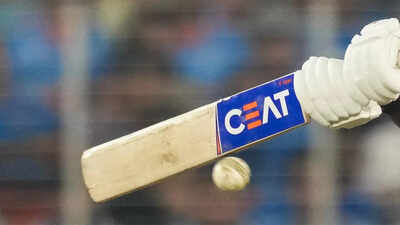ARTICLE AD BOX

Representational image (TOI Photo)
In cricket, a diamond duck refers to a dismissal where the batter is out without facing a single delivery. It is one of the rarest and most unfortunate ways for a batter to get out. This usually happens through a run-out, where the non-striker is dismissed while attempting a run before facing a ball, or occasionally if the striker is run out from the non-striker’s end during a miscommunication. The term “duck” itself signifies a score of zero. It originated from the shape of the number "0", resembling a duck's egg. Various types of ducks exist, such as the golden duck (out on the first ball faced) or platinum duck (out on the first ball of the innings). A diamond duck is worse in some ways because the batter doesn't even get the chance to play a delivery.Go Beyond The Boundary with our YouTube channel. SUBSCRIBE NOW! Diamond ducks are particularly painful for top-order batters or star players because they occur before any contribution is made.
In team strategy and batting partnerships, these dismissals can disrupt momentum and confidence. They are also notable in statistical records and can be used in commentary to highlight the chaos or pressure in a particular moment of the game.
More Than a Team: The Rise of CSK & the Whistle Podu Army
Because of its rarity and the circumstances often surrounding it—poor communication, panic running, or sharp fielding—a diamond duck can become a talking point in post-match discussions and is often replayed in highlights as a moment of drama or misfortune.
There have been 164 players to be dismissed for a Diamond Duck in ODI cricket with India recording 12 of them, including Roger Binny, Harbhajan Singh, Zaheer Khan (twice), Virat Kohli, Abey Kuruvilla, MSK Prasad, Venkatapathy Raju, Chetan Sharma, Navjot Singh Sidhu, S Sreesanth and Javagal Srinath. The first ever Diamond Duck in Test cricket came in the form of Albert Rose-Innes (South Africa) in 1889.



.png)
.png)
.png)
















 1 day ago
4
1 day ago
4









 English (US) ·
English (US) ·